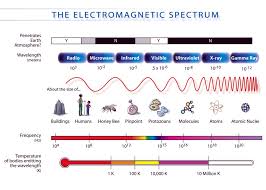

Light… where would we be without it? (No. This is not a trick question) One thing is for sure.. our existence would be far more drab than it is currently. Imagine Alaska, but worse. (Based on the way Earth is tilted on its axis, Alaskans experience sunshine at midnight on the first day of summer, while in the winter, they sometimes don’t see the sun at all, or for only a few hours each day.), Imagine a world lacking entirely of sunshine. Sounds miserable, doesn’t it? Well. With that in mind, light has some wacky properties that can have unintended effects on humans.
Here are a few of them:

1) Exposure to bright flashes of light can make some people sneeze. Research shows that between 18% and 35% of humans are estimated to suffer from something called “photic sneeze reflex,” which is essentially a condition that can result in a person sneezing when they are exposed to bright light. The exact cause of this reflex isn’t well understood, but there are theories that suggest this happens when nerve signals in the brain are crossed, which is a lot more practical than the theories famous scientists in the past have put forth in the past. One of which, came from Aristotle, who suggested that sneezing occurs when the heat from the sun hits the nose. Another theory came from Francis Bacon, which suggested that the sun’s light made the eyes water, with the resulting moisture irritating the nose. In essence, both are a bit ridiculous when looking back.
2) Have you ever heard the saying “If the human brain were so simple that we could understand it, we would be so simple that we couldn’t?” (said by Emerson M. Pugh) I can’t stress the amount of truth found in that statement. The human brain is notoriously difficult to understand, something we have learned by spending billions of dollars for research, preformed by the best minds human-kind has to offer — in hopes of trying to comprehend why it does some of the things it does.

In this instance, what exactly “is” color and why are we unable to perceive certain hues? Especially from an object that’s simultaneously emitting wavelengths that could be interpreted as blue -and- yellow or red -and- green in ordinary viewing conditions? That’s what we refer to as “forbidden colors” (or impossible colors, whatever floats your boat), a hue that’s a combination of various intensities of various frequencies of light emitted from the optical portion of the electromagnetic spectrum. Now, when I say this, I’m not referring to the colors you get when you mix certain colors of paint. When this happens, you’re merely mixing a primary and secondary color together to get an intermediate color. Instead, you can train your brain to get around the “opponent channels” that are responsible for seeing and processing visible light, which in turn, can help process visual information more efficiently, while limiting the range of visible colors on the electromagnetic spectrum.
This finding suggests that color opponency, which is responsible for cancelling out certain hues (red versus green, blue versus yellow and black versus white) of color, can be disabled, thus allowing the human visual system to interpret wavelengths of color that aren’t accessible to the naked eye.
Want more information? Here is another list of interesting things about light. OOOORRR, You can check out this great article on a similar topic, the formation of rainbows.